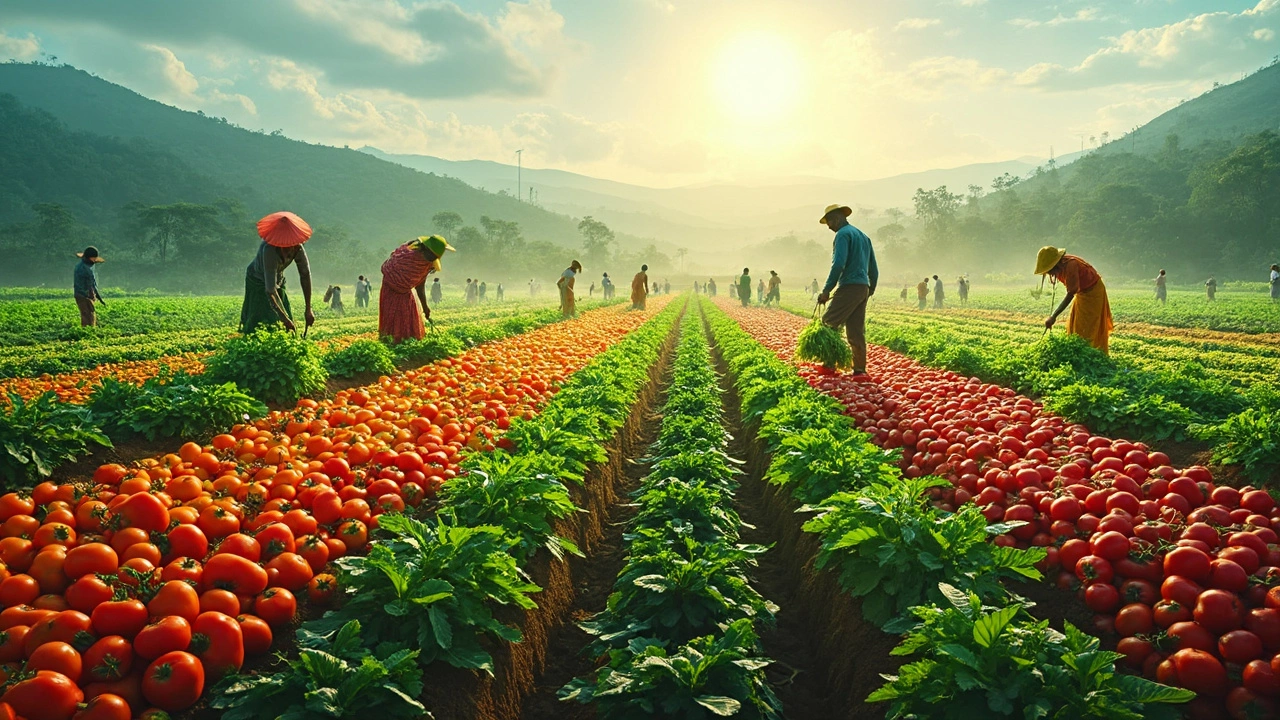High Yield Crops: Boosting Production Across India
When talking about high yield crops, plants that produce significantly more harvest per hectare than average varieties. Also known as high-producing crops, they are the backbone of food security in a country feeding 1.4 billion people. Rice, the staple grain that accounts for nearly 40 % of India's total cereal output is a classic example, yet many paddies still miss their yield potential. Irrigation, controlled water delivery systems that match plant needs and Soil fertility, the nutrient richness of the growing medium shape the success of these crops. In simple terms, high yield crops encompass rice, wheat, maize, and several pulses; achieving them requires proper irrigation; soil fertility influences their growth; and sustainable agriculture ties all these pieces together. This blend of genetics, water management, and soil care is what makes a farm move from average to exceptional.
Key Factors That Drive High Yields
First up, seed technology. Hybrid and genetically improved varieties bring built‑in resistance to pests, disease, and climate stress, which directly lifts output. For instance, the recent IRRI‑approved hybrid rice delivers up to 25 % more grain under the same field conditions. Second, water management. Precision irrigation—whether drip lines for field crops or laser‑guided flood control for rice—ensures each plant gets just the right amount of moisture, cutting waste and preventing root rot. Third, soil health. Applying balanced NPK fertilizers, together with organic amendments like compost or green manures, restores micronutrients and improves structure, letting roots explore more volume. Fourth, crop rotation and intercropping. Rotating rice with legumes replenishes soil nitrogen, while intercropping maize with mustard can suppress weeds naturally. Finally, climate‑smart practices such as conservation tillage and mulching protect soil moisture, reduce erosion, and keep the micro‑climate favorable. When these elements click, farmers report yield jumps from 3 t/ha to over 6 t/ha for rice, and similar gains for wheat and maize.
Putting it all together, the pathway to high yield crops isn’t a single trick but a system of interlinked actions. You pick the right variety, match water supply with demand, keep the soil nutrient‑rich, and respect the local climate. This holistic view is why many Indian states are launching “seed‑to‑silk” programs that bundle certified seeds, subsidized irrigation equipment, and soil testing services. Below, you’ll find a curated set of articles that dive deeper into each of these pillars – from expert watering schedules for container gardens to the latest trends in plastic recycling that affect farm packaging, and even insights into the manufacturing side of agricultural tools. Ready to explore the specifics? Scroll down to discover actionable tips, real‑world case studies, and practical guides that can help you turn the concept of high yield crops into everyday results.
Maximizing Profits with Vegetable Farming in India
Discover how to maximize profits through strategic vegetable farming in India. Understand which crops yield the highest returns, how market trends can affect profits, and tips for optimizing your agricultural efforts. Learn how to leverage organic farming techniques and effectively use resources to enhance your vegetable gardening business. This guide is a must-read for anyone looking to thrive in India's agriculture sector.
- manufacturing
- India
- food processing
- garden tips
- rice cultivation
- government schemes
- balcony garden
- urban gardening
- balcony gardening
- profitable business
- business ideas
- plastic manufacturing
- drip irrigation
- plant care
- steel manufacturing
- sustainable gardening
- startup ideas
- steel industry
- flower gardening
- textile manufacturers






